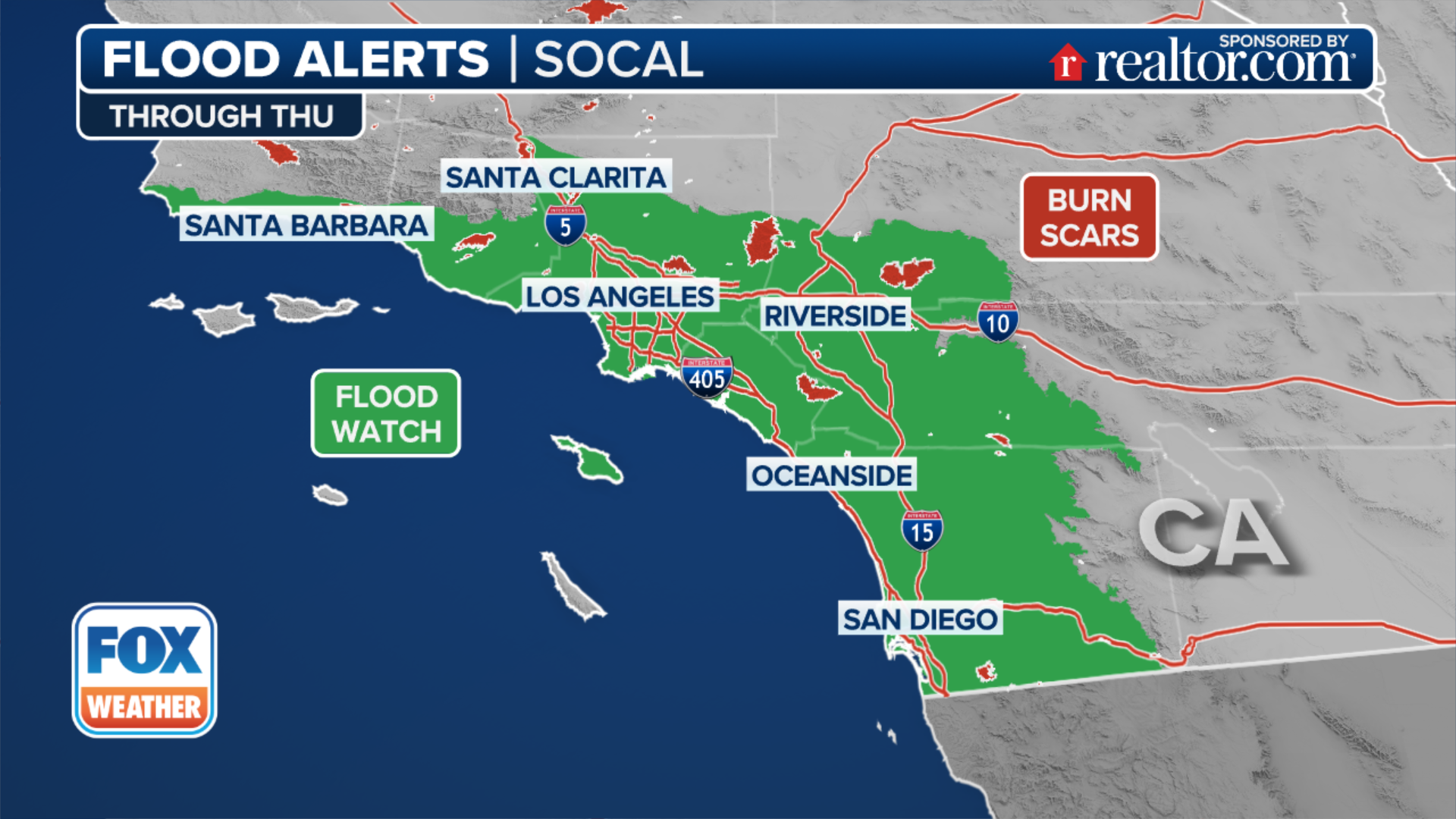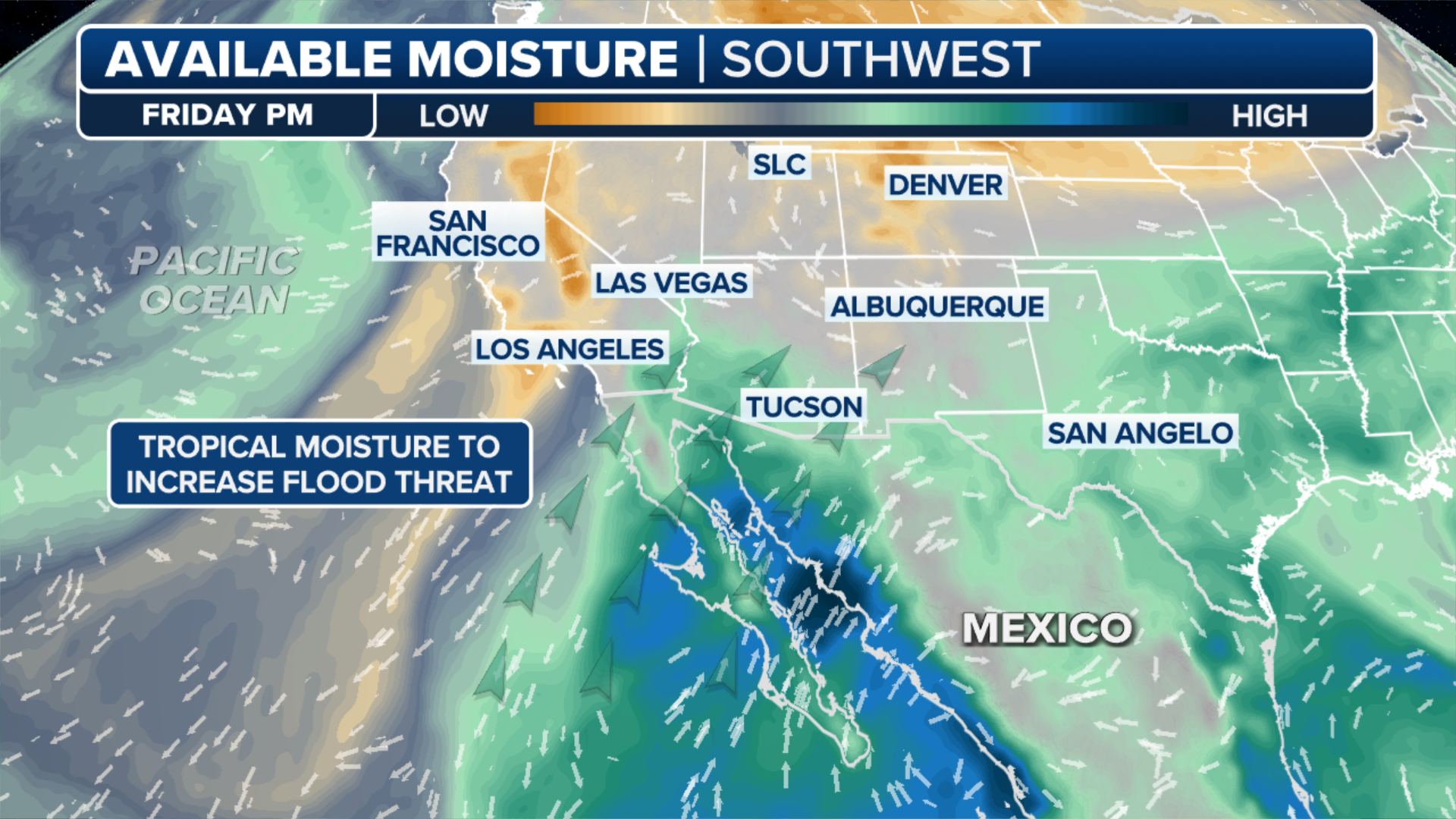Lorena's moisture plume screams into Desert Southwest, Texas
Lorena reached Category 1 status on Wednesday while off the coast of Mexico but quickly unraveled following an increase in wind shear and cooler waters.
Lorena becomes post-tropical but fuels flood threat across US Southwest
Lorena continues to weaken in the Eastern Pacific, its related tropical moisture is being thrown into the Southwestern United States. A flash flood risk increases in coverage by Friday and Saturday. The heaviest rain is expected in Arizona, New Mexico, as well as west and central Texas. This rain would be just southwest of Texas Hill Country, which is still recovering from devastating flooding this past summer. People in Hill Country should remain weather aware this weekend.
EL PASO, Texas - An active Pacific basin is sending deep tropical moisture into Mexico and parts of the southwestern United States, creating a heightened risk of flash flooding through the weekend.
The remnants of Hurricane Lorena, which is unraveling without making landfall in either Mexico or the United States, is sending a plume of tropical moisture northeast and eastward, in the general direction of southern Arizona, New Mexico and Texas.
Severe thunderstorm enhanced by moisture from Lorena drenches Yuma, Arizona
Storms enhanced by tropical moisture from Lorena brought heavy rainfall and reduced visibility to Yuma, Arizona, late on Thursday,
Social media video from Yuma, Arizona showed strong thunderstorms moving through the area Thursday night.
Forecast models have generally shown an inch or two of rain tied with the storm system, with other synoptic features such as fronts and the Southwest's annual monsoon triggering additional accumulations.

Moisture from Lorena moving through Mexico satellite.
(NOAA)
National Weather Service offices have already issued Flash Flood Watches stretching from Southern California through Arizona and New Mexico, which might be expanded into Texas as the systems responsible for the precipitation converge over the Lone Star State.
Repeated downpours can quickly overwhelm creeks and urban drainage systems, leading to dangerous flash flooding.

(FOX Weather)
NOAA’s Weather Prediction Center has highlighted a significant chunk of Texas for flooding during the late Sunday into Monday time period.
The region has been placed the region in Level 3 out of 4 on the agency’s excessive rainfall outlook, signaling a likelihood of flash flooding.
The heaviest precipitation is expected to fall southwest of where deadly flooding struck in July, killing at least 135 in the Texas Hill Country.
According to NWS forecasters, it takes only six inches of fast-moving water to knock an adult off their feet and a foot of water can be enough to carry away most vehicles.

(FOX Weather)
DID THE NATIONAL WEATHER SERVICE CAPTURE A PHOTO OF BIGFOOT DURING A PENNSYLVANIA STORM SURVEY?
Flash flooding can be intensified in regions where drought has hardened the soil or where infrastructure and pavement limits natural absorption of water.
While rainfall is often welcome news in drought areas, the combination of tropical moisture and seasonal wet weather can result in seeing too much rain too quickly.

(FOX Weather)

